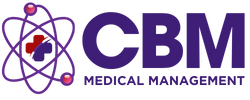Best Practices for Efficient Insurance Billing
In the dynamic healthcare landscape, mastering the art of insurance billing is essential for healthcare providers to ensure they’re compensated timely and accurately for their services. With the backing of CBM Medical Management, renowned for its 40 years of excellence in revenue cycle management and practice start-up, we delve into strategic practices that can elevate your insurance billing process. These practices are not just about getting it right; they’re about setting a standard that aligns with your commitment to providing exceptional healthcare, all while maintaining financial health and operational efficiency.
Understand Insurance Policies Thoroughly
Grasping the intricacies of various insurance policies is foundational to efficient billing. It’s all about the details—knowing covered services, copayments, and coverage prerequisites minimizes errors and denials. This insight is crucial, not only for your billing team’s success in submitting accurate claims but also for ensuring patients are informed about potential costs from the get-go.
Stay Updated with Changes
The landscape of insurance policies is ever-evolving. Staying ahead of these changes is crucial to avoiding outdated billing practices that lead to denials. Engaging in continuous learning through industry seminars, insurance newsletters, and training ensures your billing practices remain current and compliant.
Implement Efficient Billing Software
Selecting billing software that fits your specific needs is a game-changer. The ideal software should streamline the billing process, offering features like electronic submissions and real-time eligibility checks, and integrate seamlessly with your EHR system. But it doesn’t stop there—ongoing staff training and support from your software provider are essential to harness the software’s full potential.
Streamline the Billing Process
The cornerstone of efficient billing is the accuracy of patient information. A protocol for double-checking patient details and insurance information at each visit lays the groundwork for a smooth billing process, drastically reducing claim denials.
Timeliness in claim submission is directly linked to timely payments. Establishing a routine for submitting claims promptly, coupled with automated systems for tracking and reminders, ensures a fluid revenue cycle.
Regular Auditing and Analysis
Conducting regular audits of your billing process illuminates areas for improvement, helping to pinpoint recurring issues or inefficiencies. This proactive approach allows for targeted adjustments, leading to an optimized billing operation.
A deep dive into denial patterns offers invaluable insights into systemic issues within your billing process. Regular reviews and categorization of denials by reason and payer highlight opportunities for improvement, paving the way for reduced future denials and enhanced revenue.
Foster Clear Communication
Effective communication within your team ensures that everyone from healthcare providers to administrative staff plays their part efficiently in the billing process. Emphasizing clear documentation and a collaborative approach fosters an environment where billing efficiency can thrive.
Clear communication with patients about their coverage and financial responsibilities reduces confusion and facilitates smoother payment collections. Similarly, a solid relationship with insurance payers, rooted in understanding their policies and procedures, simplifies the claims and dispute resolution process.
Adopting these best practices in insurance billing not only streamlines your billing process but also fortifies your practice’s financial footing. It’s a commitment to operational excellence that resonates through every aspect of your service delivery, ultimately contributing to higher patient satisfaction and a stronger, more efficient healthcare provision.


